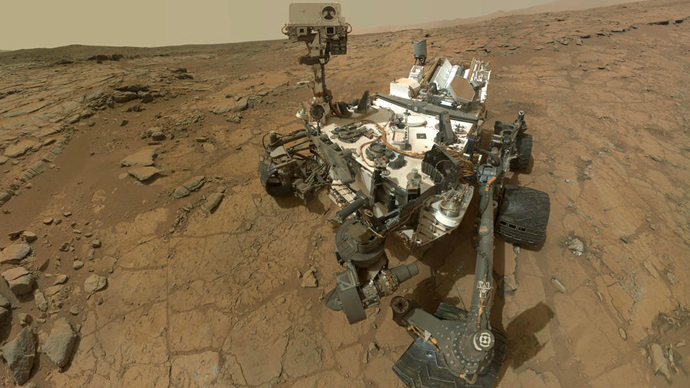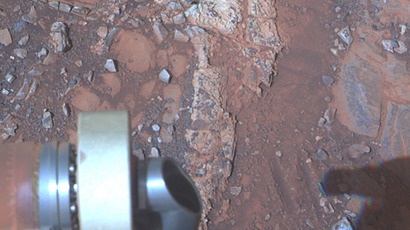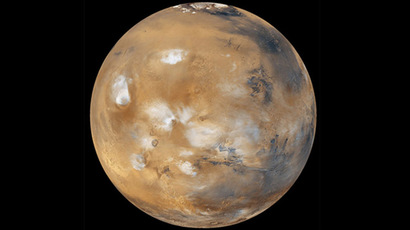NASA rover Curiosity finds water in Mars soil - report

The rover Curiosity has discovered water in fine-grained soil on the surface of Mars, NASA confirmed Thursday in a series of papers published in the journal Science.
Each cubic foot of Martian soil contains about two pints of
liquid water, though the molecules are bound to other minerals in
the soil.
Curiosity first landed on Mars in August 2012 on
Gale Crater, near the equator of the planet. Its aim was to
circle and scale Mount Sharp, in the middle of the crater, a
five-kilometer-tall mountain that will help NASA understand the
history of Mars.
NASA scientists released the first detailed, peer-reviewed
results of Curiosity’s experiments done during its first four
months on Mars in a series of five papers published in Science.
"We tend to think of Mars as this dry place -- to find water
fairly easy to get out of the soil at the surface was exciting to
me," said Laurie Leshin, dean of science at Rensselaer
Polytechnic Institute and lead author on the Science paper that
verified existence of water in the surface soil.
"If you took about a cubic foot of the dirt and heated it up,
you'd get a couple of pints of water out of that -- a couple of
water bottles' worth that you would take to the gym,” she
said, according to the Guardian.
Curiosity found about 2 percent of the soil, by weight, was water
by scooping dirt samples under its wheels and depositing them
into an oven in a centralized compartment called Sample Analysis
at Mars.
"We heat [the soil] up to 835C and drive off all the volatiles
and measure them," said Leshin. "We have a very sensitive
way to sniff those and we can detect the water and other things
that are released."
The rover also found sulphur dioxide, carbon dioxide and oxygen
as soil and minerals collected decomposed with increased
temperature.

A main aim of Curiosity’s missions is to find out whether Mars
was ever hospitable to life. Scientists believe water
was once abundant on the surface of the planet, but it has since
almost completely disappeared.
"The rocks and minerals are a record of the processes that
have occurred and [Curiosity is] trying to figure out those
environments that were around and to see if they were
habitable," Peter Grindrod, a planetary scientist at
University College London who was not involved in the analyses of
Curiosity data, told the Guardian.
The other papers published in Science included x-ray diffraction
images of the soil in an attempt to examine the crystalline
structure of the minerals on Mars’ surface, and analysis of a
volcanic rock called "Jake_M,” named after a NASA
engineer. The findings show the rock was similar to a type found
on Earth known as mugearite, often found on ocean islands and in
rift zones.
The published results of Curiosity’s experiments are the
beginning of insights into Mars expected to come in the next few
years.
"It's the first flexing of Curiosity's analytical
muscles," Grindrod said. "Curiosity spent a long time
checking out the engineering, instruments and procedures it was
going to use – these papers cover just that engineering period.
The targets here weren't chosen because of their science goals as
such but as good targets to test out the instruments."
Leshin said in addition to the excitement of exploring a new
planet, the findings will help planning for any human mission in
the future.
"I do think it's inevitable that we'll send people there and
so let's do its as smartly as we can. Let's get as smart as we
can before we go,” she said.
The soil on Mars also showed the existence of a chemical called
perchlorate, which can be toxic to humans.
"It's only there at a 0.5% level in the soil but it impedes
thyroid function," she said. "If humans are there and are
coming into contact with fine-grained dust, we have to think
about how we live with that hazard. To me it's a good connection
between the science we do and the future human exploration of
Mars."














